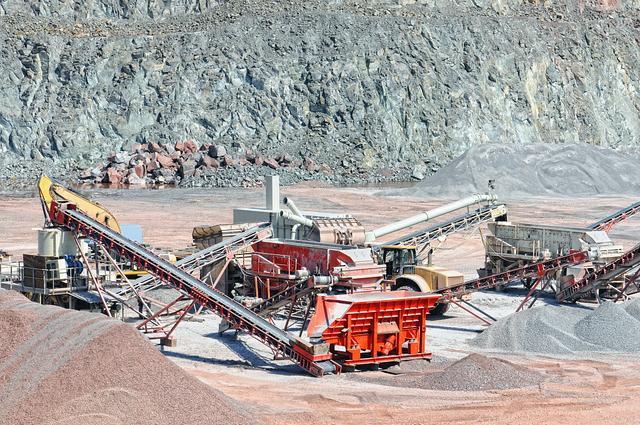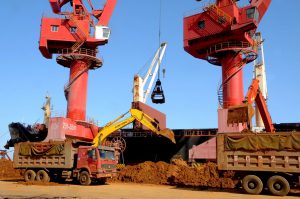(ATF) Rare earth prices and their related stocks are on a continuous rise, with analysts wondering when this upward trend will ever end – given tight supply and mushrooming demand is projected for years ahead, it is likely the rare earth train is just leaving the station.
Minmetals Rare Earth issued a performance forecast on Thursday saying it expected the net profit attributable to its parent company in 2020 will be 222 million to 292 million yuan, an increase of 158.52% to 240.02% year-on-year.
Up to now, the firm’s subsidary Ganxian Hongjin Rare Earth Co Ltd had received a total of 157 million yuan in relocation compensation and awards, Sina Finance reported.
Read also: Asia could be next as Reddit squeeze on hedge-fund shorts goes global
In addition, the year-on-year increase in the company’s main product sales gross profit, and relocation and liquidation inventory surplus, also contributed to the expected increase in the current period’s performance.
During the reporting period, it is estimated that the impact of non-recurring gains and losses on net profit is approximately 130 million yuan.
For other rare earths in early trading on Thursday, the rare earth permanent magnets sector once again strengthened, as Huahong Technology once again rose by the daily limit and Guangsheng Nonferrous Metals, Fangbang and Minmetals Rare Earths followed the rise.
Analysis believe that the strength of rare earth permanent magnet stocks stems from the recent rise in rare earth prices, which is mainly due to the continuous increase in the demand for magnetic materials downstream in new energy applications.
DOMESTIC QUOTAS
In the long run, with domestic quotas and insufficient foreign development, the contradiction between supply and demand in the rare earth market may intensify, and the space for sustainable profitability for leading companies is expected to open up.
Recently, the non-ferrous metals sector has performed strongly too. Among them, rare earth permanent magnet stocks lead the way. Northern Rare Earth’s closing price increased for three consecutive trading days and has accumulated a deviation of 20%, sparking an inquiry by the exchange.
On Monday, Southern Rare Earth Group announced the latest listing price of heavy rare earth oxides. Compared with last week, the average listed price of dysprosium oxide increased by 130,000 yuan/ton, the average price of terbium oxide increased by 100,000 yuan/ton, and the average price of lutetium oxide increased by 50,000 yuan/ton.
China’s rare earth price index shows that domestic rare earth prices have begun to rise after hitting a low in June last year, and the upward momentum has not diminished after entering 2021.
10-YEAR HIGH
According to data from Xinhua Finance, as of January 25, the price of dysprosium oxide in heavy rare earths was 2.235 million yuan/ton, reaching a five-year high; the price of terbium oxide also reached a high of 8.8 million yuan/ton, a record high in the past 10 years.
At the same time, the price trend of light rare earths cannot be ignored. The price of neodymium praseodymium oxide is also maintained at a high level of 455,500 yuan/ton.
An observer of the rare earth industry said that the market has now become increasingly popular for praseodymium and neodymium oxide as downstream magnetic material plants have continued to purchase on dips.
Some smelting and separation plants are in short supply of praseodymium and neodymium oxide, and they have received future orders, according to state media. In general, the prices of Nd-praseodymium products are firm and they are in the ascendancy as a whole.
PRICE ACCELERATION
Xie Honghe, the chief of non-ferrous metals industry at Zhongtai Securities, believes that this round of rare earth price acceleration may have just begun.
Domestic implementation of total control indicators, new overseas mines (run by Chinese firms), more limited supply, and new energy vehicles, frequency appliances, wind power and other green-based economic fields are all contributing to the demand for neodymium praseodymium oxide.
The biggest difference between this increase in rare earth prices and those surges of the past is that the rebound in demand for downstream magnetic materials from supply speculation has driven prices of rare earth products such as neodymium praseodymium oxide and neodymium iron boron up.
A number of brokerage research reports have pointed out that, in the short-term, the increase in the numbers of domestic home appliance inverter air conditioners is expected to bring about a rise in the demand for magnetic materials in 2021-2022.
ELECTRONICS DEMAND
At the same time, global sales of new energy vehicles have maintained a high growth rate, consumer electronics demand has stabilised, mid-to-high-end magnetic materials have resumed production – leading magnetic materials factories to continue to expand – and so the combined increase in light and heavy rare earth prices brought about by resupply needs will continue.
Taking the new energy automobile industry in China as an example, according to Zheshang Securities, global sales of EVs are expected to reach 2.8 million in 2020, and the demand for rare earth permanent magnets is expected to reach 14,000 tons.
By 2025, global sales of new energy vehicles are expected to reach 12 million and the demand for rare earth permanent magnet materials is expected to reach 60,000 tons, with an average annual compound growth rate of more than 30%.
China’s domestic policies have also given major support to the rare earth industry. In the past, the phenomenon of stealing and selling “black rare earths” (illegally mined) has been repeatedly cracked down on, and China’s days of selling rare earths at “cabbage prices” has come to an end.
MANAGEMENT REGULATION
On January 15, the Ministry of Industry and Information Technology publicly solicited opinions on the ‘Regulations on Rare Earth Management (Draft for Comment)’, showing China’s determination to regulate the management of the rare earth industry and promote its high-quality development.
“This is the first major legislation for the rare earth industry. The regulations have specific provisions on industry mining indicators, reserves, illegal products and traceability,” Li Shuaihua, chief analyst of the non-ferrous industry of Caitong Securities, said.
“The introduction of relevant regulations specifically for the rare earth industry reflects the government’s emphasis on the industry and the importance of the industry.”






















